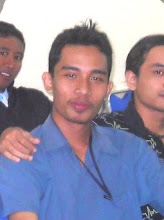I KETUT MARIO (1897-1968)
I Ketut Mario is thought to have been born in Belaluan village, Denpasar, and later grew up in Banjar Lebah, Tabanan. An aristocrat named Anak Agung Ngurah Made Kaleran, who loved the arts and gave much support to artists in his region, has been identified as his adopted father.
Mario first became a dancer for the Pangkung Gong club in Tabanan. In 1958 he went with the group to Paris, Holland, England, America and Canada, and in 1962 they toured America.
Mario was not only a dancer, he was a choreographer as well. His monumental creation Kebyar Duduk, or if danced with trompong, Kebyar Trompong, stirred a revolution in Balinese dance. These creations contrasted greatly with other dancers of the time, being performed for the most part in a stooped sitting position. The birth of Kebyar Duduk in 1925 drew an enourmous influence from gamelan gong kebyar when Mario became accidentally entranced by the music he heard played by the musicians of Bantiran village. Another Mario's choreography is Oleg Tamulilingan, which he did in 1952. It also gave a contribution for the development of the Balinese dance.
NI KETUT RENENG (1916-1993)
"I feel God sitting in the forefront of my mind. From then I don't feel anything. I just move. My body becomes light as a feather. I feel extremely beautiful and the audience are enchanted."
Born in Kedaton, Denpasar, Ni Reneng dedicated herself at Geria Punia, home of a local priest. There she acquired many skills, such as how to become a good servant, how to make religious offerings, how to dance, and how to play gamelan. These skills were soon put when she performed in temples.
Ni Reneng started taking dance lesson when she was six years old, and her first teacher at Geria Punia was Ida Pedanda Kerta, a most strict and disciplined man. Soon after Ida Pedanda Kerta saw a huge potential in Ni Reneng, he called on three dance experts to teach her Gambuh dance, one of the classical dances that used to be performed only at a temple ceremony. Ni Reneng remembered that these teachers even stricter than Ida Pedanda Kerta. By the age of eleven she was already an amazing dancer, so that the Banjar Kedaton Legong club became famous. She has alredy mastered almost all of the classical pelegongan dances such as Legong Playon, Lasem, Kuntir, Kuntul, Bapang, Jobog, Guak Macok, Condong, and Legod Bawa. And from that moment on she was permitted to perform in the temples.
Disciplined training from a host of teachers matured Ni Reneng into a true artist. She became renowned for her beauty, dancing skills, and integrity. She was constantly concerned with keeping alive the classic dances she had mastered. Many of her students were foreigners and they were extremely attentive and diligent. Ni Reneng was worried that in the future Balinese people would have to study classical Balinese dances abroad. Recently many new dancers have arrived on the scene, but few of them can liven the arts as a duty to society. Tourism is now the main pull, not dancing in temples.








0 comments:
Post a Comment